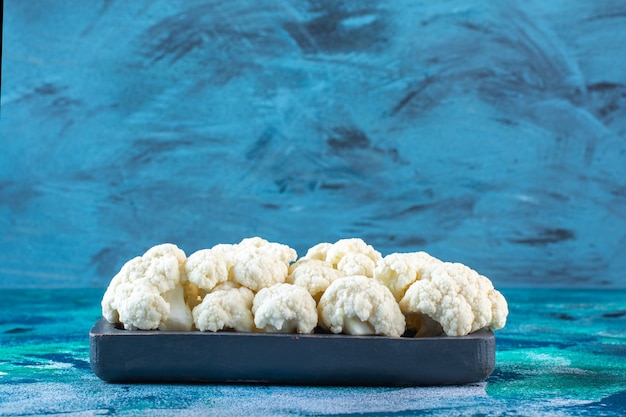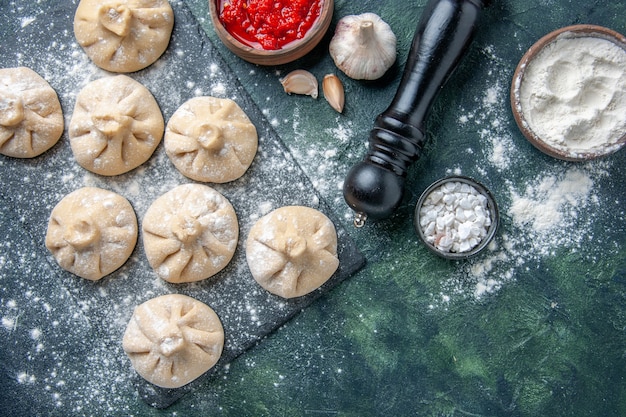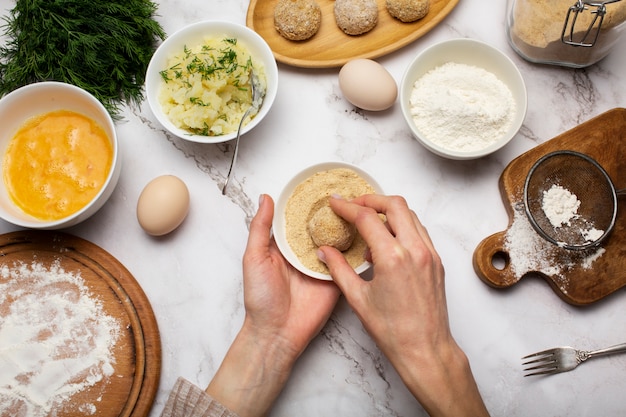Ah, dumplings. Those little parcels of deliciousness that can transport you to a bustling street food market in Asia or a cozy Italian trattoria. They’re versatile, comforting, and frankly, utterly irresistible. But getting them just right, with that perfect balance of tenderness and flavour, can be a bit of a challenge. I've been there, burnt a few batches, had some turn out soggy and lifeless, but through trial and error, I've finally cracked the code. And today, I'm sharing my secrets with you.
Part 1: The Dumpling Landscape

First, let's get our bearings. There's a whole world of dumplings out there, each with its own unique character. But for the sake of this guide, we're focusing on the two most common types: steamed and boiled.
Steamed
Think light, delicate, and bursting with flavour. Steamed dumplings are like little clouds of joy, perfectly suited for a light lunch or a refreshing summer meal. They often feature thin wrappers that allow the delicate aromas of the filling to shine through.
Boiled
Boiled dumplings, on the other hand, offer a more substantial experience. They tend to have thicker wrappers, providing a hearty base for rich and flavorful fillings. Think hearty stews, warming winter comfort food, and that satisfying feeling of a good, wholesome meal.
Part 2: The Size and Filling Factor

Let's delve a bit deeper into the heart of the matter: size and filling. These two factors play a crucial role in determining cooking time and ultimately, the success of your dumpling experience.
Size
Think of it like this: a small dumpling is like a quick sprint, while a large dumpling is a marathon. Smaller dumplings, with their thinner wrappers and less filling, will reach their peak of deliciousness much faster. Larger dumplings, on the other hand, need time to cook through, ensuring the filling is heated to perfection and the wrapper achieves that delightful chewiness.
Filling
The filling, my friend, is where the real magic happens. Every ingredient plays a part in the cooking process. Lean meats like pork tend to cook quicker than lamb or beef, while denser fillings like potatoes or root vegetables need a little more time. Then there's the matter of moisture. Watery fillings, like those with a lot of vegetables, might cook more quickly, while those with a higher fat content, such as pork belly, will take longer.
Part 3: Temperature Tales

Now, let’s talk about that essential element: temperature. Think of it as the golden key that unlocks the perfect dumpling. Get it wrong, and your culinary masterpiece could turn into a soggy disaster.
Steam
For steamed dumplings, the steam needs to be hot, consistent, and full of life. Aim for that gentle, swirling, almost magical steam. You want the dumplings to be enveloped in a warm embrace, cooking evenly and delicately. If the steam is weak or inconsistent, your dumplings might end up unevenly cooked.
Boil
Boiled dumplings, on the other hand, need a robust, vigorous boil. The water should be bubbling like a cauldron, full of energy, ensuring the dumplings cook through quickly and evenly. A gentle simmer will only lead to soggy results.
Part 4: The Art of Dumpling Intuition
Now, you've got your dumplings in the steamer or pot, but how do you know when they're ready for their grand entrance? Here's where intuition and a little bit of experience come into play.
Visual Inspection
Start by giving your dumplings a good look over. The wrapper should be translucent, indicating that the steam has penetrated and cooked through the dough. If it's still opaque, it needs a little more time.
The Touch Test
Next, gently press a dumpling with your finger. If it feels soft and yielding, you're on the right track. If it feels resistant or doughy, it needs to cook a little longer.
The Fork Check
Finally, for boiled dumplings, gently pierce a dumpling with a fork. The filling should be cooked through, no longer raw or cold. If it's still raw, give it a few more minutes.
Part 5: The Dumpling Checklist for Success
Here’s a quick checklist to keep handy when cooking your dumplings:
Steamed Dumplings
- Use a steamer: A bamboo steamer is ideal, but a regular steamer basket will do.
- Check the water level: Make sure there’s enough water in the base of the steamer to create a good amount of steam.
- Bring the water to a rolling boil: This will ensure that the steam is hot enough to cook the dumplings.
- Place the dumplings in the steamer: Make sure they’re not overcrowded, allowing the steam to circulate freely.
- Cover the steamer: This will trap the steam and ensure that the dumplings cook evenly.
- Steam for 8 to 12 minutes, or until the dough is translucent and the filling is cooked through. Adjust cooking time based on size and filling.
Boiled Dumplings
- Use a large pot: This will ensure that there’s enough room for the dumplings to cook without overcrowding.
- Bring the water to a rolling boil: This will ensure that the dumplings cook quickly and evenly.
- Add a splash of oil to the water: This will help to prevent the dumplings from sticking to the bottom of the pot.
- Carefully add the dumplings to the boiling water: Make sure they’re not overcrowded. If necessary, cook in batches.
- Bring the water back to a boil: This will ensure that the dumplings cook through quickly and evenly.
- Cook for 10 to 15 minutes, or until the dough is tender and the filling is cooked through. Adjust cooking time based on size and filling.
Part 6: Avoiding Common Dumpling Disasters
We’ve all been there, haven’t we? We’ve all made mistakes when it comes to cooking dumplings. But don’t worry, it happens to the best of us. Here are a few common mistakes to avoid:
- Overcrowding the steamer or pot: This will prevent the steam or boiling water from circulating evenly, resulting in unevenly cooked dumplings.
- Not letting the water come to a rolling boil: This will result in longer cooking times and potentially undercooked dumplings, especially for boiled dumplings.
- Cooking for too long: This will result in dry, tough dumplings, especially if the filling is already dry.
- Not checking the dumplings for doneness: This could result in undercooked or overcooked dumplings.
Part 7: Tips and Tricks for Dumpling Mastery
Now, let’s move on to some tips and tricks that will help you take your dumpling game to the next level.
Freezing
If you’re making a large batch of dumplings, you can freeze them for later. Just make sure to place them on a baking sheet lined with parchment paper and freeze them individually until they’re solid. Then you can transfer them to a freezer-safe bag or container.
To cook frozen dumplings, add them directly to boiling water or a steamer without thawing. You’ll need to add a few extra minutes to the cooking time, as frozen dumplings will take longer to heat through.
Adding Flavor
You can add a splash of soy sauce, sesame oil, or ginger to the water or steam to add extra flavor to your dumplings. Just be sure to add it after the water or steam has come to a boil. Avoid adding too much, as you don't want to overwhelm the delicate flavors of your dumplings.
Serving
Dumplings are delicious on their own, but they’re even better when served with dipping sauces. Some of my favorites include soy sauce, chili oil, and vinegar. Experiment with different combinations to find your perfect match.
Part 8: A World of Dumpling Styles
The world of dumplings is vast and diverse, with countless variations across different cultures and regions. Each style brings its own unique flavors and traditions.
Chinese Dumplings
Chinese dumplings, known as “baozi,” are a staple food in many parts of China. They come in all sorts of shapes and sizes, but they’re typically filled with pork, vegetables, or shrimp. They’re often steamed, boiled, or pan-fried, offering a wide range of textures and flavors.
Japanese Dumplings
Japanese dumplings, known as “gyoza,” are typically pan-fried and have a crispy bottom. They’re usually filled with pork, cabbage, and chives, offering a delightful blend of savory and crunchy textures.
Korean Dumplings
Korean dumplings, known as “mandu,” are usually steamed and filled with pork, vegetables, or kimchi, a spicy fermented cabbage dish. They’re often served with a spicy dipping sauce, adding a fiery kick to the meal.
Italian Dumplings
Italian dumplings, known as “ravioli,” are usually filled with cheese, meat, or vegetables. They’re typically boiled and served with a tomato sauce, offering a classic and comforting Italian flavor.
Other Dumpling Styles
There are many other dumpling styles around the world, including Russian “pelmeni,” Ukrainian “vareniki,” and Polish “pierogi.” Each style has its own unique flavors and cooking methods, reflecting the culinary traditions of their respective regions.
Part 9: Beyond the Basics
Now, you might be thinking, "Okay, I've got the basics down. But what about those fancy restaurants? How do they make their dumplings so perfect?" Well, here's the thing, there's a lot more to it than just following a recipe. It's all about technique, experience, and a bit of artistry.
The Art of Dumpling Folding
The way you fold a dumpling can have a huge impact on its taste and texture. Some folds create a tighter seal, which helps to keep the filling inside and prevent it from spilling out during cooking. Others create a more open shape, which allows the steam to circulate more easily and results in a fluffier dumpling.
There are many different ways to fold dumplings. The most common method is to fold them into a crescent shape. But you can also fold them into a triangle, a square, or even a flower. The choice is yours, allowing you to express your creativity and create your own unique dumpling masterpieces.
Pan-Frying Techniques
Pan-frying is a great way to add a crispy texture to your dumplings. But it’s important to get the technique right. If you fry them for too long, they’ll become dry and tough. If you fry them for too short of a time, they won’t be crispy enough.
The key is to get a nice, even browning on the bottom of the dumpling without overcooking the filling. This can be achieved by using a hot pan and a little bit of oil. You can also add a small amount of water to the pan during the frying process to create steam and help the dumplings cook through more evenly. This creates a crispy, golden bottom and a juicy, flavorful interior.
Part 10: The Dumpling Experimentation
Don't be afraid to experiment! Dumplings are a blank canvas for creativity. You can use different types of dough, fillings, and cooking methods to create your own unique creations.
For example, you could try adding a splash of soy sauce to the dough for a savory flavor, or a bit of sugar for a sweeter flavor. You could experiment with different types of vegetables, meat, or seafood in your filling, creating unique flavor combinations.
Creative Fillings
Here are a few ideas for creative dumpling fillings:
- Spicy pork with ginger and chili: A fiery delight for spice enthusiasts.
- Chicken with mushrooms and peppers: A flavorful and satisfying combination.
- Shrimp with scallions and cilantro: A refreshing and aromatic combination.
- Beef with broccoli and soy sauce: A classic combination, perfect for a hearty meal.
- Cheese with spinach and garlic: A creamy and flavorful vegetarian option.
Creative Cooking Methods
You can also experiment with different cooking methods. Try pan-frying your dumplings in a pan with a little bit of oil for a crispy exterior. Or try baking them in the oven for a healthier alternative.
And don’t forget about the dipping sauces. You can create your own unique dipping sauce by combining different soy sauces, vinegars, oils, and herbs. Let your creativity flow and create your own signature dumpling experience.
Part 11: Dumpling FAQS
1. How do I know if my dumplings are cooked through?
The best way to check is to gently poke one with a fork or chopstick. If the dough is tender and the filling is cooked through, you’re good to go. If the dough feels raw or the filling is still cold, they need a bit more time.
2. What should I do if my dumplings stick to the bottom of the pot?
You can add a splash of oil to the water to help prevent them from sticking. Just be careful not to overdo it, you don’t want your dumplings to be greasy.
3. Can I freeze dumplings?
Yes, you can freeze dumplings. Just make sure to place them on a baking sheet lined with parchment paper and freeze them individually until they’re solid. Then you can transfer them to a freezer-safe bag or container. This will prevent them from sticking together.
4. What are some good dipping sauces for dumplings?
Some of my favorites include soy sauce, chili oil, and vinegar. You can also get creative and make your own dipping sauce by combining different soy sauces, vinegars, oils, and herbs. Experiment with different flavor profiles to find your perfect match.
5. What are some tips for making delicious dumplings?
Here are a few tips:
- Use high-quality ingredients: This will make a big difference in the taste of your dumplings.
- Don’t overfill the dumplings: This will prevent them from bursting during cooking.
- Be careful not to overcook the dumplings: This will result in dry, tough dumplings.
- Serve with a dipping sauce: This will add an extra layer of flavor to your dumplings.
- Most importantly, have fun and experiment! Dumplings are a blank canvas for creativity.
Part 12: Final Thoughts: The Dumpling Journey
So there you have it, my guide to perfectly cooked dumplings. Remember, it’s all about finding that perfect balance between timing, temperature, and technique. Don’t be afraid to experiment and find what works best for you. And most importantly, enjoy the process! After all, what’s better than a plate of delicious, homemade dumplings?
And if you ever find yourself with a pot of overcooked or undercooked dumplings, don’t despair. There’s always a solution. You can always add them to a soup, a stir-fry, or even a salad. And remember, even the best cooks have their bad days. Just keep practicing, and you’ll be a dumpling master in no time.
Happy dumpling making!
Everyone is watching

Corn on the Cob: The Ultimate Guide to Perfectly Cooked Ears
Healthy MealsAh, corn on the cob. Just the name evokes images of sunny days, barbecues, and that sweet, juicy flavour that ...

Perfect Pork Roast Oven Cooking Time: A Guide to Delicious Results
Healthy MealsThere's something truly satisfying about a perfectly roasted pork. The aroma alone is enough to make your mout...

Ham Cooking Time: How Long to Bake, Smoke, or Boil a Delicious Ham
Healthy MealsAh, ham. It's a classic, isn't it? A real crowd-pleaser, especially around holidays. And when done right, it'...

Scallops: The Ultimate Guide to Perfect Cooking
Healthy MealsAh, scallops. Those delicate, sweet, and utterly delicious morsels of the sea. They hold a special place in my...

Spaghetti Squash: The Ultimate Guide to Cooking and Serving
Healthy MealsRemember that time you saw spaghetti squash at the supermarket, looking all bumpy and strange, and thought, "W...
